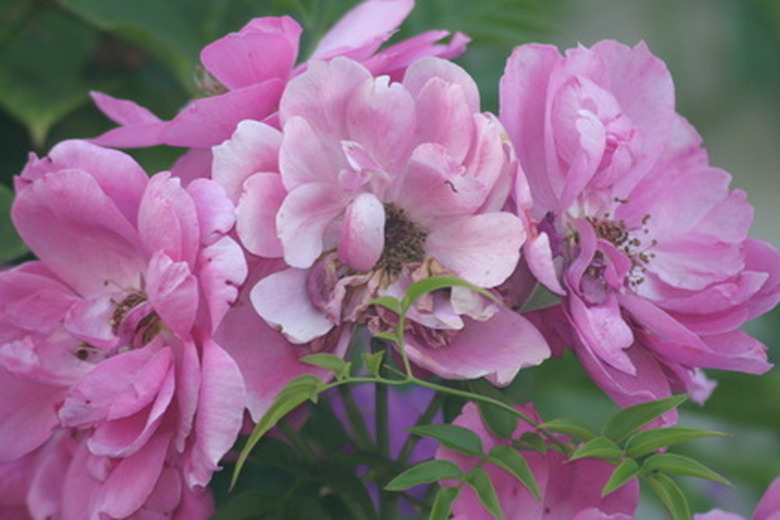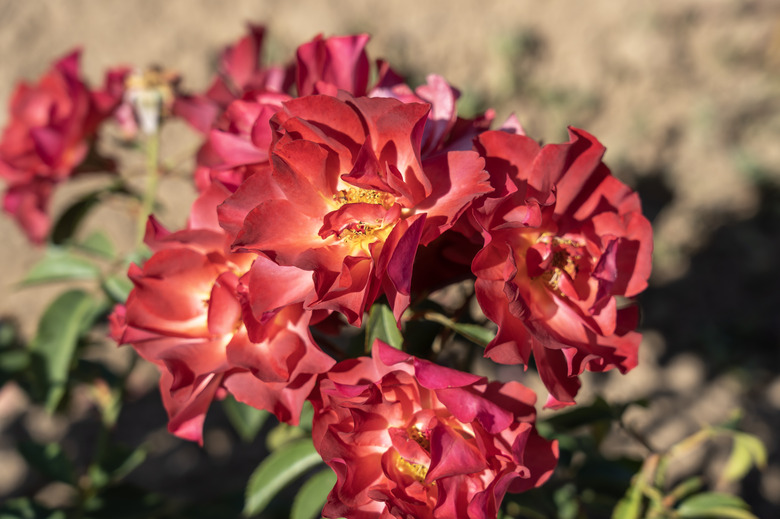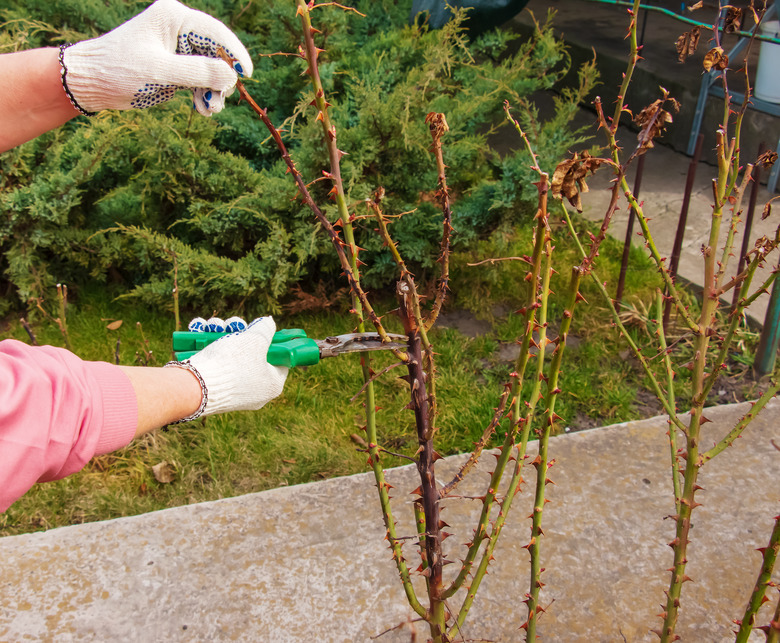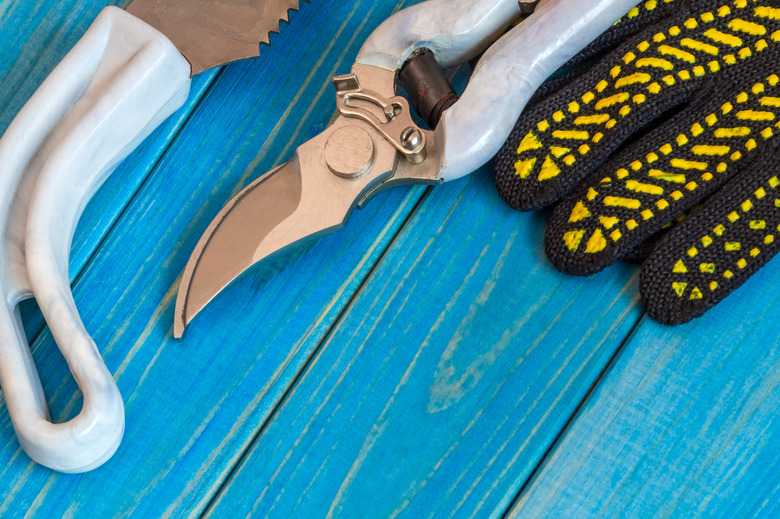How To Deadhead Floribunda Roses
With their bouquet-like clusters of small flowers, which grow in single-, semi-double and double-petaled varieties, floribunda roses stand out among other rose varieties.
Although floribunda roses share many traits with other roses (Rosa spp.), they are typically less hardy in colder climates. Common cultivars such as Europeana (Rosa 'Europeana') grow best in USDA plant hardiness zones 5b to 11b, unlike most rose varieties, which can only grow in hardiness zones 4 to 7.
Deadheading is an important part of caring for floribunda roses, because it will keep them looking good and blooming well throughout the growing season. However, the process differs slightly from deadheading other types of roses, but it's not difficult to do once you learn how.
About Floribunda Roses
The rose breeder Jackson and Perkins introduced floribunda roses at the 1939 New York World's Fair. They were the result of crossbreeding a polyantha rose with a hybrid tea rose, which created a showy, multi-flowered rose with excellent disease resistance and better cold hardiness than other hybrid roses.
The name floribunda means "many-flowering," and it refers to the arrangement of the flowers on the stem. Floribunda rose bushes produce sprays or clusters of many small, tea rose-like blooms. They are shrubby or climbing roses that range in size from small bushes to large, sprawling shrubs that can reach a height of 5 to 6 feet with an equally wide spread.
Some common cultivars of floribunda rose include Angel Face (Rosa 'Angel Face', zones 5 to 9); Cinco de Mayo (Rosa 'Cinco de Mayo', zones 6 to 10); and Ketchup & Mustard (Rosa 'Ketchup & Mustard', zones 5 to 9), which is an eye-catching variety noted for its dark red petals with a bright yellow interior.
Deadheading Floribunda Roses
Deadheading a floribunda rose not only improves the appearance of the shrub during the growing season and helps keep your rose garden tidy, but it can also prolong or enhance blooming.
There are two main approaches to deadheading floribunda rose plants: removing the individual blooms as they fade or removing the entire cluster once all the blooms have faded. Both methods produce good results, so choose which method works best for you.
- Deadhead from late spring until just after mid-summer. No cuts should be made after August, so that any new growth has time to harden before the first frost.
- Snip off each individual flower as it fades, making the cut at a 45° angle between the base of the flower and where it attaches to the main stem. Rake up and throw away the pruned flowers.
- Alternatively, wait until the entire flower spray has faded and snip it off where the stem attaches to the main branch. Make the cut at a 45-degree angle approximately one-fourth from where the stem attaches to the main branch.
Floribunda roses grown in full sun and fertile, well-draining soil with plenty of mulch will produce more flowers during the growing season and will need more regular deadheading. Those grown under shady or stressful conditions will produce fewer flowers.
Pruning Floribunda Roses
As with most perennials, floribunda roses need pruning to create a strong structure and improve their overall shape. Hard pruning also encourages the growth of larger blooms suitable for use as cut flowers, although this is not the case for every floribunda cultivar.
- Prune floribunda roses in early spring before new growth forms. Start by pruning out old, dead growth and crossed canes. For older shrubs, remove all but three to five of the healthiest, most vigorous canes to rejuvenate the shrub.
- Cut back the remaining old growth by one-third to one-half, or to a height of 15 to 18 inches.
- Make the cuts at a 45° angle roughly 1/4 inch below a growth node. Make the cut so that it faces away from the center of the bush toward the outer edge, which will encourage outward growth and give a bushy appearance, while allowing air to circulate through the center of the shrub.
- Prune off lateral growth from the main stems from the base to about 10 inches above ground level, which will allow better airflow and discourage fungal and bacterial problems.
Disinfecting Your Pruning Tools
The threat of disease is a fact of life when growing roses such as floribundas. Disinfecting your pruning tools before you prune and deadhead roses will help prevent the spread of disease between plants. This applies to roses regardless of whether you are growing shrubby cultivars such as Frida Kahlo (Rosa 'Frida Kahlo', zones 4 to 10) or climbers such as Iceberg (Rosa 'Iceberg', zones 5 to 11), which is a floribunda that stands out among other English roses with its white flowers sometimes tinged with light pink.
- Keep your pruning shears sharp and free from nicks. Sharp shears make a cleaner cut, which allows the plant to heal faster.
- Scrub your pruning shears thoroughly to remove any caked-on plant matter and mud. Pay special attention to the hinges.
- Soak your pruning shear blades in full-strength disinfectant cleaner for five minutes; then rinse them with water and wipe them dry with paper towels.
- The University of Arizona Cooperative Extension recommends keeping your pruning shears in a container filled with 70 percent isopropyl alcohol when pruning. This will keep them sanitary while cutting multiple bushes, which will help prevent cross-infection.
References
- Chicago Botanic Garden: Deadheading and Pruning Roses
- University of Arizona Extension, Yavapai County: Pruning Roses
- UC Master Gardeners: Pruning Floribunda and Polyantha Roses
- University of Illinois Extension: Floribunda Roses
- Iowa State University Extension: Rose
- North Carolina State University Extension: Rosa 'Europeana'
- University of Florida IFAS Extension: Disinfecting Pruning Tools
- Jackson and Perkins: What is a Floribunda Rose?



